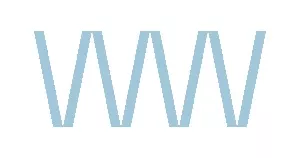- within Energy and Natural Resources, Technology, Litigation and Mediation & Arbitration topic(s)
- with readers working within the Chemicals, Metals & Mining and Utilities industries
The Civil Aviation Authority of New Zealand (the CAA) released new rules for the flying of unmanned aircraft beginning 1 August 2015. The changes were aimed at drone operators and are found in Part 101 and Part 102 of the Civil Aviation Rules (the Rules).
Reasons for the changes are fairly obvious: there has been a huge growth in the development and use of Remotely Piloted Aircraft Systems (RPAS) (ie 'drones') and concerns have been raised regarding violations of privacy and the dangers that flying objects pose to people and property should the drone operator lose control. The changes were implemented to try and improve aviation safety for operators, airspace users and for the general public and their property.
All drone operations must now be carried out in accordance with Part 101 and/or 102 of the Rules. The new rules prescribe more explicit constraints upon the use of drones than was previously the case.
The Rules are separated into two parts. Part 101 is the starting point and applies to the operation of a drone of 25kg or under that fully complies with all the rules set out in Part 101. The operation of any drone that is more than 25kg OR does not comply with any of the other rules set out in Part 101 is governed by Part 102. The main distinction between the two parts is that under Part 102 the operator is required to be certified by the CAA in order to operate the drone.
What are the key requirements for operating drones?
There are 12 key requirements that drone operators should be aware of (a list of these can be found on https://www.airshare.co.nz/rules). They include rules relating to where, how, when and above what property drones can be operated. All drone operations must comply with these rules unless an exemption is given by the CCA (by an application for a operator's Part 102 certificate).
The change likely to affect most drone operators is the requirement to get consent from those people or properties that the drone will fly over. If the drone is going to fly over someone's private property, you need to make sure that is okay with them first, just as you would if you wanted to walk through their property.
If you want to fly over public land, make sure you contact the local council or organisation that owns the land first to check their requirements. Some spaces will be specifically dedicated to drone activity and a special permit to fly there will not be needed. However, some parks may require you to apply for consent from the council each time you want to fly.
What if you can't operate your drone safely under the rules in Part 101?
If you can't operate your drone safely under the Part 101 rules then you must apply for a Part 102 certificate. The certificate allows the CAA to tailor specific safety and operational requirements to each proposed Part 102 drone operation. For example, flights such as Fastway Courier's highly publicised drone parcel delivery in Auckland in June 2015 will now require a special Part 102 certificate if they are to occur.
Applications for a Part 102 certificate should be made to the CAA. That will require the applicant to submit an 'exposition' detailing how they will mitigate the risks posed by the operation of their drone. You can find forms and templates for the exposition on the CAA website.
Operators must comply with the restrictions of their certificate or risk penalties.
What penalties may operators face for breaching the Rules?
Any breach of the Rules may be acted on by the CAA who can confiscate the drone and/or issue an infringement notice. Operators need to take care because fines and even criminal prosecution may be on the cards if the CAA deems it a serious enough breach of the Rules.
While there have been no prosecutions under the new regulations
to date in New Zealand, there have been warnings by local
authorities.
In New Zealand a number of fines have been issued under the old
regulations, including:
- A $500 fine to a Taupo man for flying too close to an airport;
- A $1000 fine to an Aucklander for flying their drone over Auckland City at nighttime; and
- A $500 fine to an Invercargill man for flying at dusk and too close to an airport.
With increasing regulation and drone ownership, it seems only a matter of time before NZ sees its first drone prosecution.
It is important to be aware that operators could still face penalties even if they inadvertently breach the Rules. This occurred in a recent UK decision: The United Kingdom Civil Aviation Authority v Robert Knowles (unreported, 2014). Here, Mr Knowles was operating his drone legally in a wide open field. However, during the flight his remote lost radio contact with the drone and it flew out of his control for three minutes, flying within 50m of a bridge and over a nuclear facility before crashing in a river channel. Mr Knowles was prosecuted and fined £800 plus court costs of £3,500.
Where to from here?
The new Rules mean New Zealand's reputation as having a friendly (and relatively loose) legislative environment for testing drones may now be in jeopardy as more requirements accompany each operation. Operators need to make sure that they understand the new Rules, particularly the new consent requirements. However, commentary from those operating in the drone space appears to be optimistic that the Part 102 certificate will allow one-off test flights to continue, ensuring New Zealand's place at the forefront of drone technology continues.
The content of this article is intended to provide a general guide to the subject matter. Specialist advice should be sought about your specific circumstances.
[View Source]

